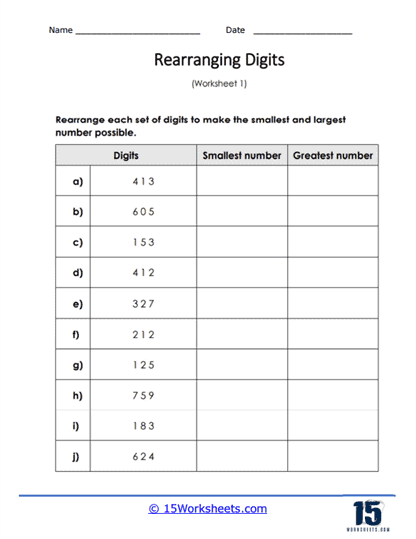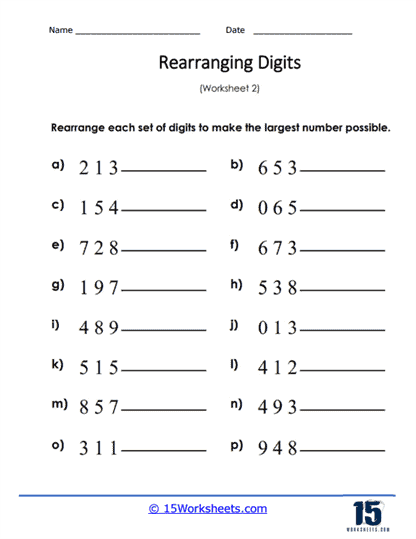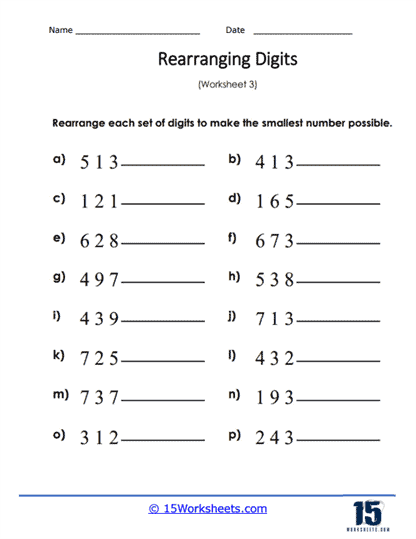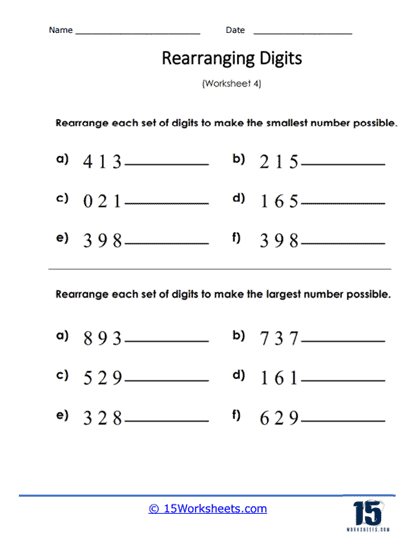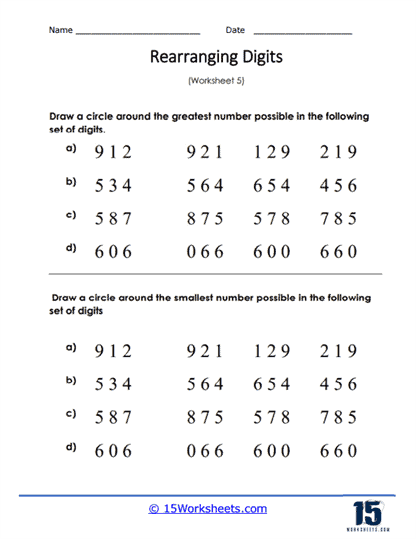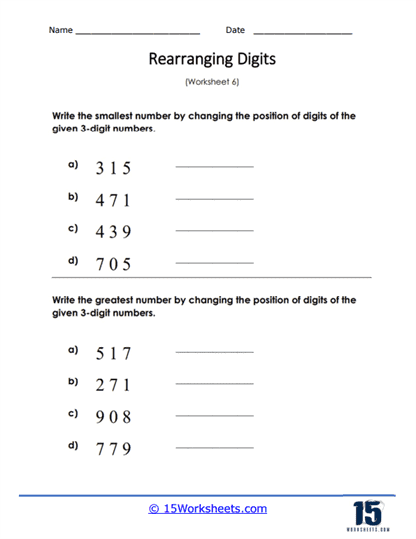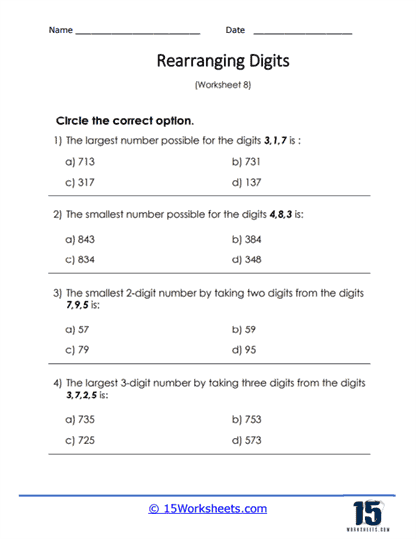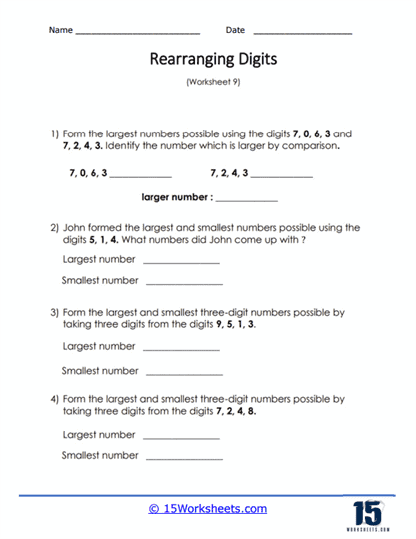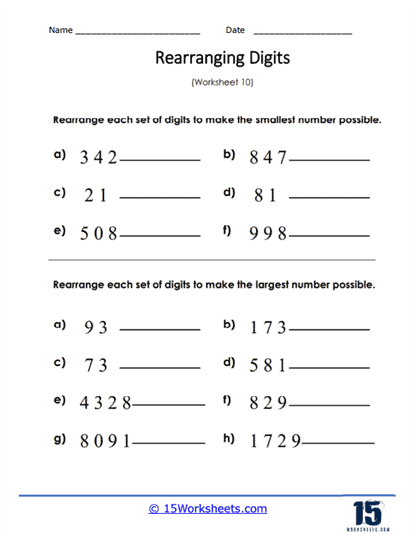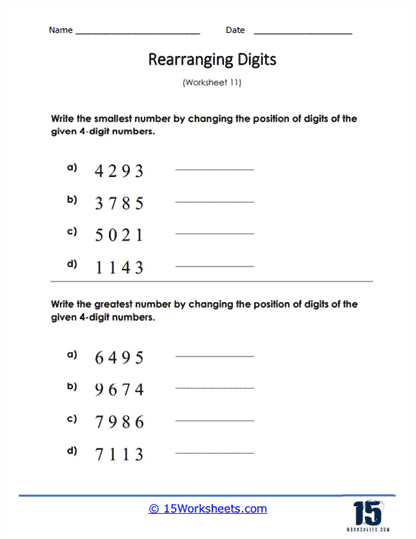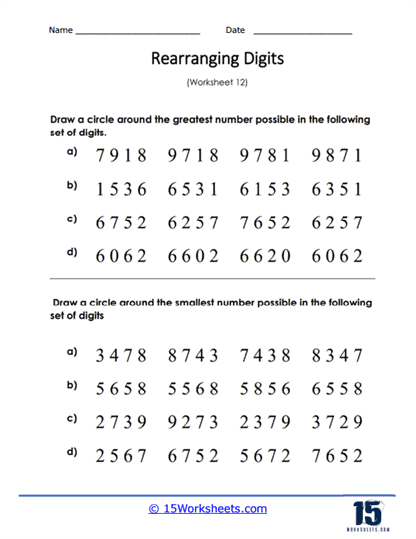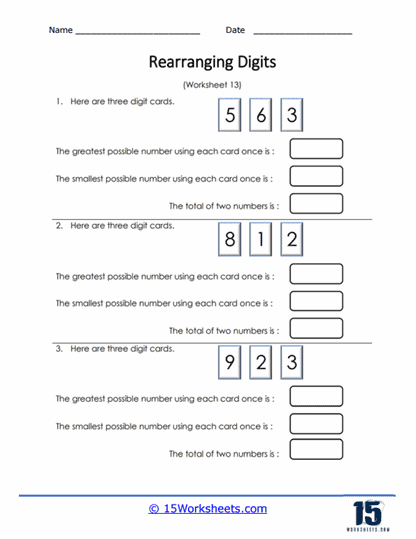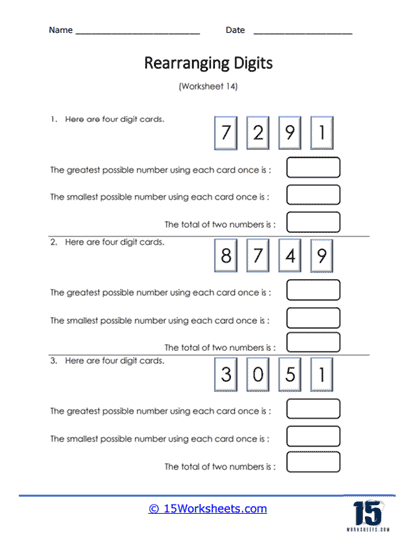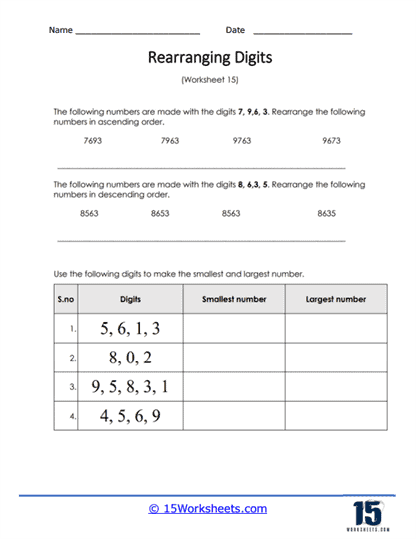Rearranging Numbers Worksheets
About These 15 Worksheets
These worksheets aim to strengthen students’ understanding of number patterns, place value, and numerical relationships. Most of the worksheets specifically target place value concepts by asking students to rearrange the digits within a number to create the largest or smallest possible value. This activity enhances students’ understanding of the significance of each digit and how they contribute to the overall value of a number.
The purpose of rearranging numbers worksheets is to strengthen students’ numeracy skills, enhance their ability to recognize patterns, and improve their logical thinking. These worksheets promote critical thinking, problem-solving, and numerical fluency.
How to Rearrange Numbers to Make the Largest or Smallest Value Possible
Rearranging numbers to make the largest possible value involves organizing the given digits or numbers in a specific order. For the largest value, you want the largest integers in the highest possible place value. In the end you would arrange the integers from highest to lowest from the greatest place value to the least.
Here’s a step-by-step guide to rearranging numbers to create the largest value:
List the Numbers – Write down the given numbers or digits that you need to rearrange. For example, let’s assume you have the digits 5, 2, 9, 1, and 4.
Compare and Rearrange – Compare the digits based on their values, starting from the left-most position. Rearrange the digits in descending order, placing the largest digit in the leftmost position. In our example, you would place the digit 9 first, as it is the largest among the given digits. Continue the process of comparing and rearranging the remaining digits in descending order. In our example, the next largest digit is 5, followed by 4, 2, and finally 1.
Combine the Digits – Combine the rearranged digits to form the largest possible value. In our example, the largest value created by rearranging the given digits is 95,421.
Here is a quick example for you. Let’s say you were given these digits: 5, 7, 1, 9, 3
If you were asked to form the largest value possible, you would take these steps:
- The largest digit is 9, so it will be placed in the leftmost position.
- The next largest digit is 7, so it will be placed to the right of 9.
- Arrange the remaining digits in descending order: 5, 3, 1.
- Combine the digits in the determined order: 97531 or 97,531.
What If We Wanted the Smallest Value Possible?
You would take similar steps from what we just did, but in reverse. Here are the steps required to make the smallest value possible:
- Look at the given numbers and identify the digits or numbers involved.
- Determine the total number of digits or numbers to be used.
- Place the smallest digit or number in the leftmost position (most significant digit) and continue in ascending order for the remaining positions.
- If there are duplicate digits or numbers, arrange them in ascending order as well.
- Combine the digits or numbers in the determined order to form the smallest possible value.
Example: Given the digits: 5, 7, 1, 9, 3
If you were asked to form the smallest value possible, you would take these steps:
- To make the smallest value:
- The smallest digit is 1, so it will be placed in the leftmost position.
- The next smallest digit is 3, so it will be placed to the right of 1.
- Arrange the remaining digits in ascending order: 5, 7, 9.
- Combine the digits in the determined order: 13579 or 13,579.

